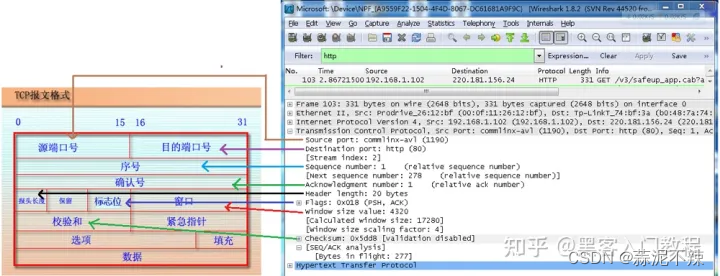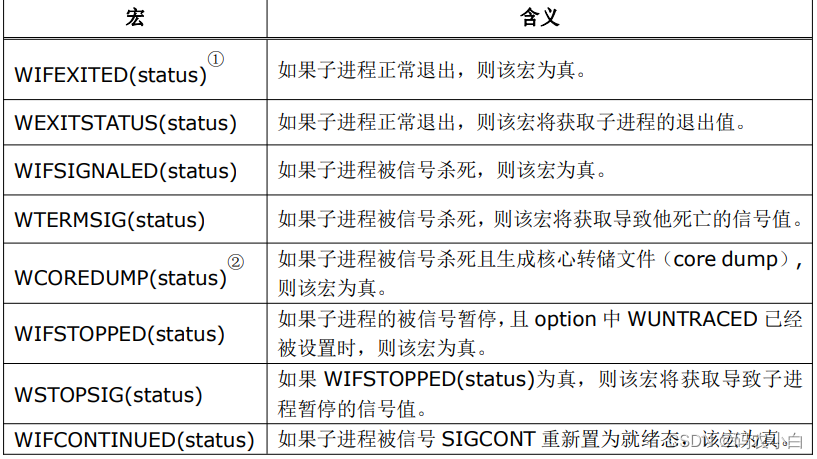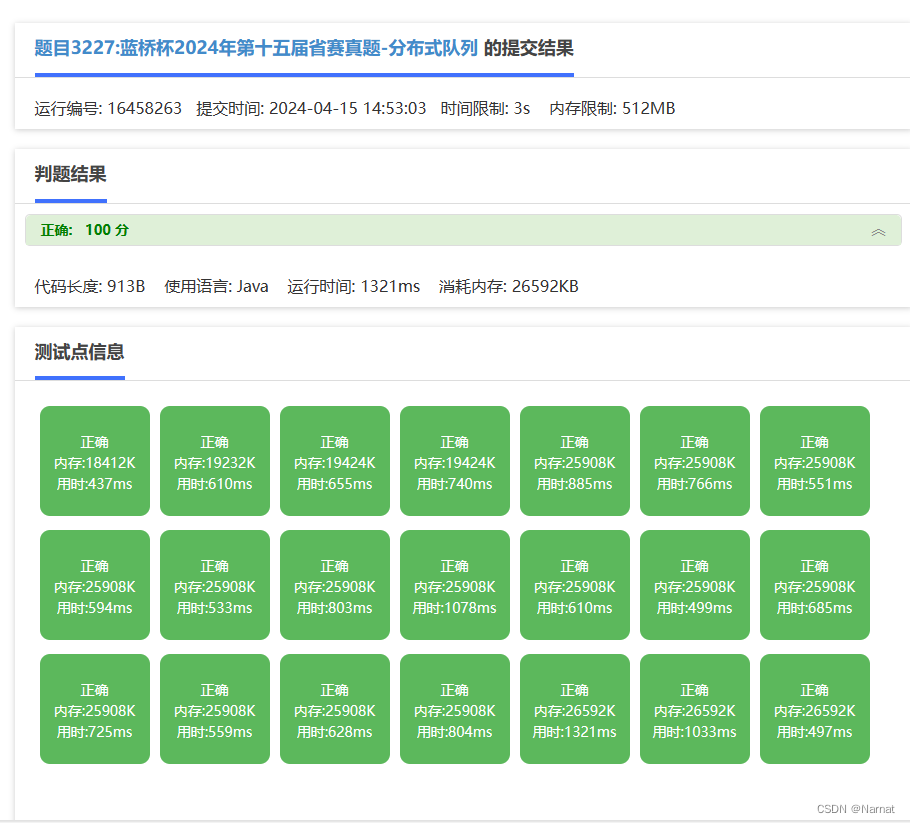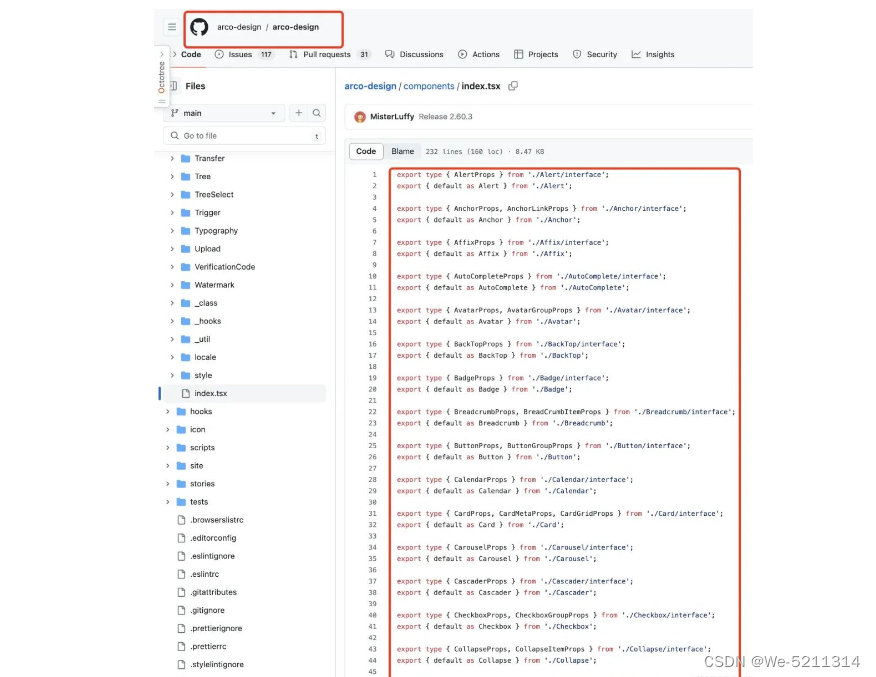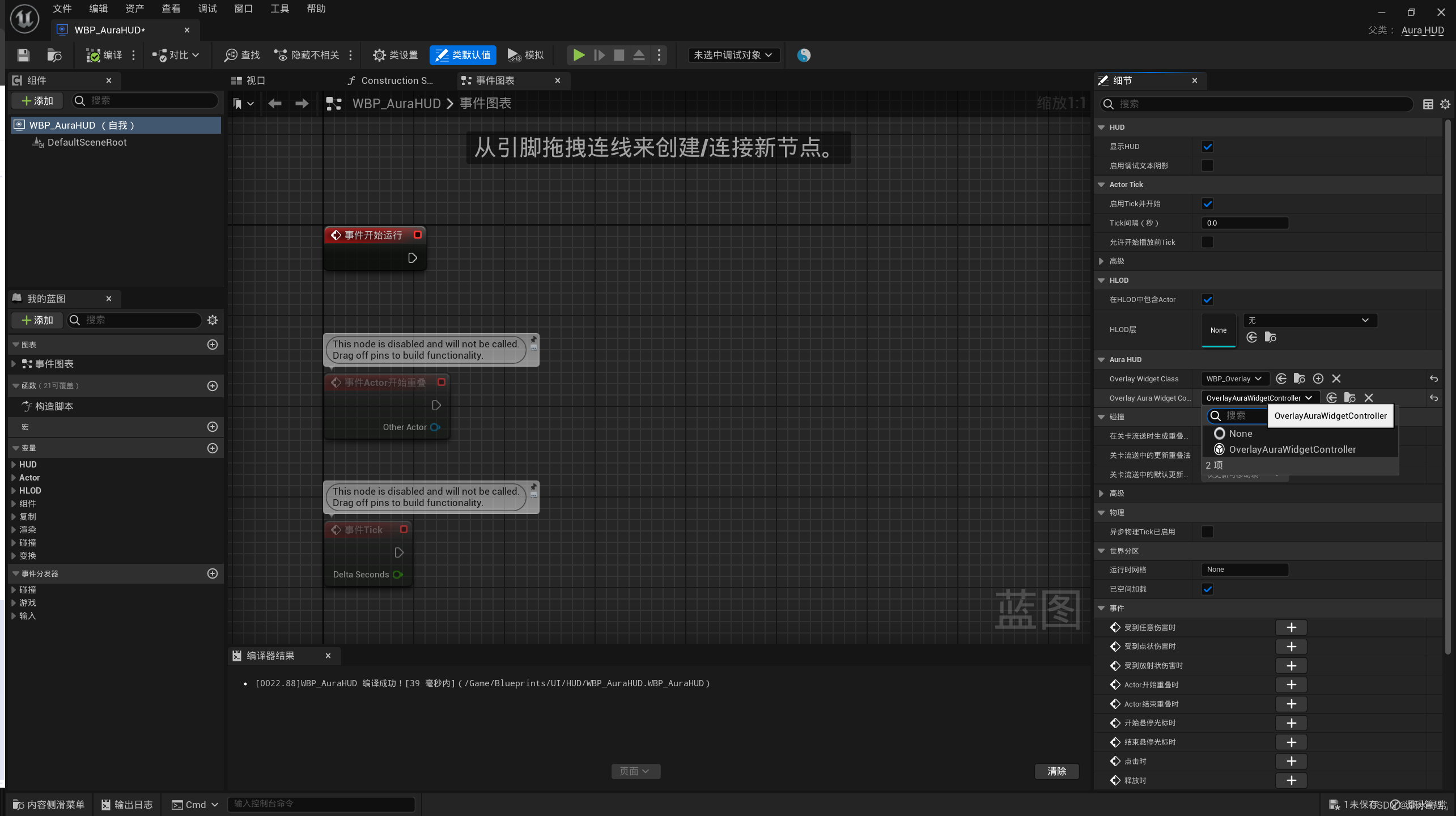任务
iris数据集包含150条数据,从iris.txt读取,每条数据有4个属性值和一个标签(标签取值为0,1,2)。要求对这150个4维数据进行PCA,可视化展示这些数据在前两个主方向上的分布,其中不同标签的数据需用不同的颜色或形状加以区分。
算法
m个n维数据向量去中心化后(各向量的每个维度减去这个维度在所有向量上均值),按列排列构成矩阵
X
n
×
m
\mathbf{X}_{n\times m}
Xn×m,计算协方差矩阵
V
a
r
n
×
n
=
1
m
X
X
T
\mathbf{Var}_{n\times n}= \frac{1}{m}\mathbf{XXT}
Varn×n=m1XXT的特征值,选取最大两个特征值对应的特征向量构成矩阵
P
2
×
n
\mathbf{P}_{2\times n}
P2×n,则
Y
2
×
m
=
P
X
\mathbf{Y}_{2\times m}=\mathbf{PX}
Y2×m=PX即PCA后的结果,也就是把四维数据压缩为二维,每个数据对应二维平面上的一个点。
对PCA的详解,可以参考这篇文章;关于PCA与奇异值分解的联系,可以参考这篇文章;关于如何用C++求矩阵特征值(Jacobi方法)和特征向量及对矩阵进行奇异值分解,可以参考这篇文章。
代码
C++实现PCA
#include<bits/stdc++.h>
using namespace std;
// 读取鸢尾花数据集到一个二维数组中
vector<vector<long double>> readIrisData(const string& filename);
// 读取第五列的值到一个向量中
vector<long double> readfifthValue(const string& filename);
// 从矩阵 A 非对角元中选择最大的元素,并返回其位置
pair<int, int> chooseMax(vector<vector<long double>> A);
// 计算矩阵 A 的转置
vector<vector<long double>> calAT(vector<vector<long double>> A);
// 计算矩阵 A 和其转置的乘积
vector<vector<long double>> calAAT(vector<vector<long double>> A);
// 计算矩阵Q^T * A * Q的每个元素,使用给定的参数 p, q, t, c, d
long double calculateElement(const vector<vector<long double>> A, int i, int j, long double p, long double q, long double t, long double c, long double d);
// 计算矩阵 Q^T * A * Q
vector<vector<long double>> calQTAQ(vector<vector<long double>> A);
// 判断Jacobi迭代方法是否满足结束条件
int judgeEnd(vector<vector<long double>> A);
// 计算矩阵 A 的特征值
vector<long double> calEigenValue(vector<vector<long double>> A);
// 对矩阵 A 进行列主元化成上三角
vector<vector<long double>> Column_Elimination(vector<vector<long double>> A);
// 求解系数矩阵为上三角矩阵A的线性方程组
vector<long double> SolveUpperTriangle(vector<vector<long double>> A, vector<long double> b);
// 解系数矩阵为上三角矩阵 A 的线性方程组,且A全为0的行数为 cnt
vector<vector<long double>> solve(vector<vector<long double>> A, int cnt);
// 计算矩阵 A 的特征向量,使用给定的特征值
vector<vector<long double>> calEigenVector(vector<vector<long double>> A, vector<long double> eigenValue);
// 计算 Sigma 矩阵,使用给定的特征值 x 和矩阵的行数 n1 和列数 n2
vector<vector<long double>> calSigma(vector<long double> x,int n1, int n2);
// 计算向量 x 的欧几里得范数
long double EuclideanNorm(vector<long double> x);
// 对矩阵 A 进行归一化
vector<vector<long double>> Normalization(vector<vector<long double>> A);
// 计算矩阵 A 和 B 的乘积
vector<vector<long double>> multiplyMatrices(const vector<vector<long double>> A, const vector<vector<long double>> B);
int main()
{
vector<vector<long double>> X = calAT(readIrisData("iris.txt"));
int n1 = X.size();
int n2 = X[0].size();
long double sum = 0;
for(int i = 0; i < n1; i++)
{
long double sum = 0;
for(int j = 0; j < n2; j++)
sum += X[i][j];
long double avg = sum / n2;
for(int j = 0; j < n2; j++)
X[i][j] -= avg;
}
cout << "X: " << endl;
for(int i = 0; i < n1; i++)
{
for(int j = 0; j < n2; j++)
cout << X[i][j] << " ";
cout << endl;
}
vector<vector<long double>> XT = calAT(X);
vector<vector<long double>> XXT = multiplyMatrices(X, XT);
vector<vector<long double>> Var(n1, vector<long double>(n1));
for(int i = 0; i < n1; i++)
for(int j = 0; j < n1; j++)
Var[i][j] = XXT[i][j] / n2;
vector<long double> x =calEigenValue(Var);
sort(x.begin(), x.end());
reverse(x.begin(), x.end());
cout<<"特征值:"<<endl;
for(int i = 0; i < n1; i++)
cout << x[i] << " ";
vector<long double> x1;
x1.reserve(x.size());
unique_copy(x.begin(), x.end(), back_inserter(x1));
vector<vector<long double>> EigenVector = Normalization(calEigenVector(Var, x1));
vector<vector<long double>> P(EigenVector.begin(), next(EigenVector.begin(), 2));
cout << "P: " << endl;
for(int i = 0; i < 2; i++)
{
for(int j = 0; j < n1; j++)
cout << P[i][j] << " ";
cout << endl;
}
vector<vector<long double>> Y = multiplyMatrices(P, X);
cout << "Y: " << endl;
for(int i = 0; i < 2; i++)
{
for(int j = 0; j < n2; j++)
cout << Y[i][j] << " ";
cout << endl;
}
return 0;
}
// 读取鸢尾花数据集到一个二维数组中
vector<vector<long double>> readIrisData(const string& filename) {
ifstream file(filename);
vector<vector<long double>> X;
string line;
while (getline(file, line)) {
stringstream ss(line);
vector<long double> row;
string value;
int counter = 0;
while (getline(ss, value, ',') && counter < 4) {
row.push_back(stod(value));
counter++;
}
X.push_back(row);
}
return X;
}
// 读取第五列的值到一个向量中
vector<long double> readfifthValue(const string& filename) {
ifstream file(filename);
vector<long double> fifthValues;
string line;
while (getline(file, line)) {
stringstream ss(line);
string value;
int counter = 0;
while (getline(ss, value, ',') && counter < 4) {
counter++;
}
if (counter == 4) {
long double fifthValue = stold(value);
fifthValues.push_back(fifthValue);
}
}
return fifthValues;
}
// 找到矩阵 A 中非对角元中绝对值最大的元素,并返回其位置
pair<int, int> chooseMax(vector<vector<long double>> A)
{
long double max = 0;
pair<int, int> maxPos;
int n = A.size();
for(int i = 0; i < n; i++)
for(int j = 0; j < n; j++)
if(i != j && fabsl(A[i][j]) > max)
{
max = fabsl(A[i][j]);
maxPos = make_pair(i, j);
}
return maxPos;
}
// 计算矩阵 A 的转置
vector<vector<long double>> calAT(vector<vector<long double>> A)
{
int n1 = A.size();
int n2 = A[0].size();
vector<vector<long double>> AT(n2, vector<long double>(n1));
for(int i = 0; i < n1; i++)
for(int j = 0; j < n2; j++)
AT[j][i] = A[i][j];
return AT;
}
// 计算两个矩阵的乘积
vector<vector<long double>> multiplyMatrices(const vector<vector<long double>> A, const vector<vector<long double>> B) {
int n1 = A.size();
int n2 = B[0].size();
int n3 = A[0].size();
vector<vector<long double>> result(n1, vector<long double>(n2, 0.0));
for(int i = 0; i < n1; i++) {
for(int j = 0; j < n2; j++) {
for(int k = 0; k < n3; k++) {
result[i][j] += A[i][k] * B[k][j];
}
}
}
return result;
}
// 计算矩阵Q^T * A * Q的每个元素,使用给定的参数 p, q, t, c, d
long double calculateElement(const vector<vector<long double>> A, int i, int j, long double p, long double q, long double t, long double c, long double d) {
if (i == p && j == p)
return A[p][p] - t * A[p][q];
else if (i == q && j == q)
return A[q][q] + t * A[p][q];
else if ((i == p && j == q) || (i == q && j == p))
return 0;
else if (i != q && i != p && (j == p || j == q))
return (j == p ? c : d) * A[p][i] - (j == p ? d : (-c)) * A[q][i];
else if ((i == p || i == q) && j != q && j != p)
return (i == p ? c : d) * A[p][j] - (i == p ? d : (-c)) * A[q][j];
else
return A[i][j];
}
// 计算矩阵 Q^T * A * Q
vector<vector<long double>> calQTAQ(vector<vector<long double>> A)
{
int n = A.size();
pair<int, int> maxPos = chooseMax(A);
int row = maxPos.first;
int col = maxPos.second;
long double s = (A[col][col] - A[row][row]) / (2 * A[row][col]);
long double t = 0;
if(s == 0)
t = 1;
else if(abs(-s + sqrt(1 + s * s)) <= abs(-s - sqrt(1 + s * s)))
t = -s + sqrt(1 + s * s);
else
t = -s - sqrt(1 + s * s);
long double c = 1 / sqrt(1 + t * t);
long double d = t * c;
vector<vector<long double>> QTAQ(n, vector<long double>(n));
for(int i = 0; i < n; i++)
for(int j = 0; j < n; j++)
QTAQ[i][j] = calculateElement(A, i, j, row, col, t, c, d);
return QTAQ;
}
// 判断Jacobi迭代方法是否满足结束条件
int judgeEnd(vector<vector<long double>> A)
{
int i, j;
int n = A.size();
for(i = 0; i < n; i++)
for(j = 0; j < n; j++)
if(i != j && fabsl(A[i][j]) >= 1e-6)
return 0;
if(i == n && j == n)
return 1;
}
// 计算矩阵 A 的特征值
vector<long double> calEigenValue(vector<vector<long double>> A)
{
int n = A.size();
vector<long double> eigenValue(n);
vector<vector<long double>> QTAQ= calQTAQ(A);
int i, j;
while(!judgeEnd(QTAQ))
QTAQ = calQTAQ(QTAQ);
for(i = 0; i < n; i++)
eigenValue[i] =QTAQ[i][i];
return eigenValue;
}
// 对矩阵 A 进行列主元化成上三角
vector<vector<long double>> Column_Elimination(vector<vector<long double>> A)
{
int n = A.size();
vector<vector<long double>> Temp(n, vector<long double>(n));
for(int i = 0; i < n; i++)
for(int j = 0; j < n; j++)
Temp[i][j] = A[i][j];
for(int col = 0; col < n; col++)
{
long double maxnum = abs(Temp[col][col]);
int maxrow = col;
for(int row = col + 1; row < n; row++)
{
if(abs(Temp[row][col]) > maxnum)
{
maxnum = abs(Temp[row][col]);
maxrow = row;
}
}
swap(Temp[col], Temp[maxrow]);
for(int row = col + 1; row < n; row++)
{
long double res = Temp[row][col] / Temp[col][col];
for(int loc = col; loc < n; loc++)
Temp[row][loc] -= Temp[col][loc] * res;
}
}
return Temp;
}
// 求解系数矩阵为上三角矩阵A的线性方程组
vector<long double> SolveUpperTriangle(vector<vector<long double>> A, vector<long double> b)
{
int n = A.size();
vector<long double> x(n);
vector<vector<long double>> Temp(n, vector<long double>(n+1));
for(int i = 0; i < n; i++)
for(int j = 0; j < n; j++)
Temp[i][j] = A[i][j];
for(int i = 0; i < n; i++)
Temp[i][n] = b[i];
for(int row = n-1; row >= 0; row--)
{
for(int col = row + 1; col < n; col++)
{
Temp[row][n] -= Temp[col][n] * Temp[row][col] / Temp[col][col];
Temp[row][col] = 0;
}
Temp[row][n] /= Temp[row][row];
Temp[row][row] = 1;
}
for(int i = 0; i < n; i++)
x[i] = Temp[i][n];
return x;
}
// 解系数矩阵为上三角矩阵 A 的线性方程组,且A全为0的行数为 cnt
vector<vector<long double>> solve(vector<vector<long double>> A, int cnt)
{
int n = A.size();
vector<vector<long double>> x(cnt, vector<long double>(n));
vector<vector<long double>> Temp(n-cnt, vector<long double>(n-cnt));
vector<long double> Tempb(n-cnt);
for(int i = 0; i < cnt; i++)
{
for(int j = n - 1; j >= n - cnt; j--)
{
if(j >= n - i)
x[i][j] = 0;
else
x[i][j] = 1;
}
}
for(int i = 0; i < n - cnt; i++)
for(int j = 0; j < n - cnt; j++)
Temp[i][j] = A[i][j];
for(int i = 0; i < cnt; i++)
{
for(int j = n - cnt - 1; j >= 0; j--)
{
Tempb[j] = 0;
for(int k = 0; k < cnt; k++)
Tempb[j] -= A[j][n- cnt + k] * x[i][n- cnt + k];
}
vector<long double> res = SolveUpperTriangle(Temp, Tempb);
for(int j = 0; j < n - cnt; j++)
x[i][j] = res[j];
}
return x;
}
// 使用给定的特征值计算矩阵 A 的特征向量
vector<vector<long double>> calEigenVector(vector<vector<long double>> A, vector<long double> eigenValue)
{
int n = A.size();
int num = 0;
vector<vector<long double>> x(n, vector<long double>(n));
vector<vector<long double>> tempMartix(n, vector<long double>(n));
vector<vector<long double>> eigenVector(n, vector<long double>(n));
for(int k = 0; k < n; k++)
{
for(int i = 0; i < n; i++)
for(int j = 0; j < n; j++)
i == j ? tempMartix[i][j] = A[i][j] - eigenValue[k] : tempMartix[i][j] = A[i][j];
vector<vector<long double>> B = Column_Elimination(tempMartix);
int cnt = 0;//记录消元后全为0的行数
for(int i = 0; i < n; i++)
{
for(int j = 0; j < n; j++)
{
if(fabsl(B[i][j]) > 1e-7)
break;
else if(j == n - 1)
cnt++;
}
}
vector<vector<long double>> result = solve(B, cnt);
for(int i = 0; i < cnt; i++)
copy(result[i].begin(), result[i].end(), x[num + i].begin());
num += cnt;
}
return x;
}
// 使用给定的特征值 x 和矩阵的行数 n1 和列数 n2,计算 Sigma 矩阵
vector<vector<long double>> calSigma(vector<long double> x, int n1, int n2)
{
vector<vector<long double>> Sigma(n1, vector<long double>(n2));
for(int i = 0; i < min(n1, n2); i++)
Sigma[i][i] = sqrt(x[i]);
return Sigma;
}
// 计算向量 x 的欧几里得范数
long double EuclideanNorm(vector<long double> x)
{
long double norm = 0;
for(int i = 0; i < x.size(); i++)
norm += x[i] * x[i];
return sqrt(norm);
}
// 对矩阵 A 进行归一化
vector<vector<long double>> Normalization(vector<vector<long double>> A)
{
int rows = A.size();
for(int i = 0; i < rows; i++)
{
long double norm = EuclideanNorm(A[i]);
int cols = A[i].size();
for(int j = 0; j < cols; j++)
A[i][j] /= norm;
}
return A;
}
python实现PCA并将结果可视化
import numpy as np
from scipy.linalg import eigh
import matplotlib.pyplot as plt
def readIrisData(filename):
data = np.genfromtxt(filename, delimiter=',', dtype='float', encoding=None)
return data[:, :4].T, data[:, 4]
X, labels = readIrisData("iris.txt")
Var = np.cov(X)
x, EigenVector = eigh(Var)
x = sorted(x, reverse=True)
P = EigenVector[:, -2:].T
Y = np.dot(P, X)
plt.figure()
label_set = set(labels)
colors = ['r', 'g', 'b']
shapes = ['o', 's', '^']
for i, label in enumerate(label_set):#enumerate函数返回每个标签及其索引
x = [Y[0, j] for j in range(Y.shape[1]) if labels[j] == label]
y = [Y[1, j] for j in range(Y.shape[1]) if labels[j] == label]
plt.scatter(x, y, color=colors[i], marker=shapes[i], label=label)
plt.legend()#添加图例
plt.show()
可视化结果






